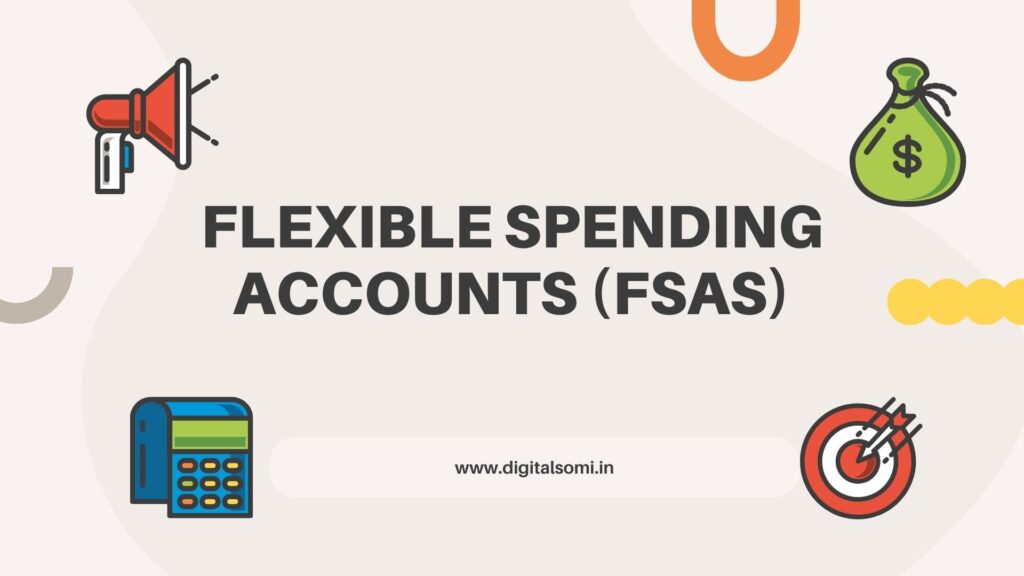In today’s fast-paced world, investing in your fitness journey is just as crucial as budgeting your monthly expenses. Whether you’re a fitness enthusiast or a newcomer looking to establish a healthier lifestyle, various financial products can support your journey. This blog post will compare financial options to help you invest in your fitness goals. “Investing in fitness is more important than ever, and with the best financial products for fitness expenses, achieving your health goals can be easier and more affordable. Options like Health Savings Accounts (HSAs), Flexible Spending Accounts (FSAs), and credit cards with fitness rewards can help you make your fitness journey both budget-friendly and well-organized. In this blog, we’ll explore the benefits of these financial products and how you can use them to support your wellness journey.”

Health Savings Accounts (HSAs)
What They Are:
Health Savings Accounts (HSAs) are tax-advantaged accounts that allow you to save money for qualified medical expenses. You can use these funds for gym memberships, fitness classes, personal training, and more, provided the expenses meet HSA guidelines.
Pros:
- Tax Benefits: Contributions to an HSA are tax-deductible, and withdrawals for qualified medical expenses are tax-free.
- Roll Over Funds: Unused funds roll over each year, allowing you to save for future fitness expenses.
Cons:
- Eligibility Requirements: To qualify, you must have a high-deductible health plan.
- Limited Usage: You can only use the funds for qualified expenses, which may limit some fitness-related purchases.
Flexible Spending Accounts (FSAs)

What They Are:
Flexible Spending Accounts (FSAs) allow you to set aside pre-tax dollars for healthcare expenses, including some fitness-related costs.
Pros:
- Tax Savings: Contributions are made pre-tax, lowering your taxable income.
- Immediate Access: Unlike HSAs, the full amount you elect for the year is available at the start of the plan year.
Cons:
- Use-It-or-Lose-It: Funds must be used by the end of the plan year, or they are forfeited.
- Limited to Medical Expenses: Not all fitness-related expenses qualify, so it’s essential to check which ones do.
Personal Loans for Fitness Equipment
What They Are:
Personal loans can be used to purchase fitness equipment like treadmills, weights, or home gym setups, making it easier to work out from home.
Pros:
- Flexibility: Use the funds for any fitness-related purchase, from equipment to gym renovations.
- Fixed Payments: Most personal loans have fixed interest rates, providing predictable monthly payments.
Cons:
- Debt Accumulation: Borrowing money can lead to debt if you are unable to make payments.
- Interest Costs: Depending on your credit score, you may pay high interest rates.
Credit Cards with Fitness Rewards
What They Are:
Some credit cards offer rewards points or cashback for fitness-related purchases, such as gym memberships, classes, or gear.
Pros:
- Rewards: Earn points or cash back on your fitness purchases, which can offset costs.
- Promotions: Some cards offer introductory 0% APR on purchases, making it easier to pay off larger fitness-related expenses.
Cons:
- High Interest Rates: If not paid off monthly, high interest rates can lead to debt.
- Overspending Risk: The convenience of credit can sometimes lead to unnecessary purchases.
Insurance Premium Discounts
What They Are:
Many health insurance providers offer discounts on premiums for policyholders who actively engage in fitness programs, such as gym memberships or fitness classes.
Pros:
- Lower Premiums: Engaging in regular fitness can lead to reduced health insurance costs.
- Motivation: Knowing that you can save money by staying active can motivate you to maintain a fitness routine.
Cons:
- Program Limitations: Not all insurance companies offer these discounts, and eligibility can vary.
- Documentation Required: You may need to provide proof of attendance at fitness classes or gym visits.
Comparing Financial Products for Fitness: Finding the Best Fit for Your Health Goals
In today’s fast-paced world, investing in your fitness journey is just as crucial as budgeting your monthly expenses. Whether you’re a fitness enthusiast or a newcomer looking to establish a healthier lifestyle, various financial products can support your journey. This blog post will compare financial options to help you invest in your fitness goals.
1. Health Savings Accounts (HSAs)
What They Are:
Health Savings Accounts (HSAs) are tax-advantaged accounts that allow you to save money for qualified medical expenses. You can use these funds for gym memberships, fitness classes, personal training, and more, provided the expenses meet HSA guidelines.
Pros:
- Tax Benefits: Contributions to an HSA are tax-deductible, and withdrawals for qualified medical expenses are tax-free.
- Roll Over Funds: Unused funds roll over each year, allowing you to save for future fitness expenses.
Cons:
- Eligibility Requirements: To qualify, you must have a high-deductible health plan.
- Limited Usage: You can only use the funds for qualified expenses, which may limit some fitness-related purchases.
2. Flexible Spending Accounts (FSAs)
What They Are:
Flexible Spending Accounts (FSAs) allow you to set aside pre-tax dollars for healthcare expenses, including some fitness-related costs.
Pros:
- Tax Savings: Contributions are made pre-tax, lowering your taxable income.
- Immediate Access: Unlike HSAs, the full amount you elect for the year is available at the start of the plan year.
Cons:
- Use-It-or-Lose-It: Funds must be used by the end of the plan year, or they are forfeited.
- Limited to Medical Expenses: Not all fitness-related expenses qualify, so it’s essential to check which ones do.
3. Personal Loans for Fitness Equipment
What They Are:
Personal loans can be used to purchase fitness equipment like treadmills, weights, or home gym setups, making it easier to work out from home.
Pros:
- Flexibility: Use the funds for any fitness-related purchase, from equipment to gym renovations.
- Fixed Payments: Most personal loans have fixed interest rates, providing predictable monthly payments.
Cons:
- Debt Accumulation: Borrowing money can lead to debt if you are unable to make payments.
- Interest Costs: Depending on your credit score, you may pay high interest rates.
4. Credit Cards with Fitness Rewards
What They Are:
Some credit cards offer rewards points or cashback for fitness-related purchases, such as gym memberships, classes, or gear.
Pros:
- Rewards: Earn points or cash back on your fitness purchases, which can offset costs.
- Promotions: Some cards offer introductory 0% APR on purchases, making it easier to pay off larger fitness-related expenses.
Cons:
- High Interest Rates: If not paid off monthly, high interest rates can lead to debt.
- Overspending Risk: The convenience of credit can sometimes lead to unnecessary purchases.
5. Insurance Premium Discounts
What They Are:
Many health insurance providers offer discounts on premiums for policyholders who actively engage in fitness programs, such as gym memberships or fitness classes.
Pros:
- Lower Premiums: Engaging in regular fitness can lead to reduced health insurance costs.
- Motivation: Knowing that you can save money by staying active can motivate you to maintain a fitness routine.
Cons:
- Program Limitations: Not all insurance companies offer these discounts, and eligibility can vary.
- Documentation Required: You may need to provide proof of attendance at fitness classes or gym visits.
Comparing Financial Products for Fitness: Finding the Best Fit for Your Health Goals
In today’s fast-paced world, investing in your fitness journey is just as crucial as budgeting your monthly expenses. Whether you’re a fitness enthusiast or a newcomer looking to establish a healthier lifestyle, various financial products can support your journey. This blog post will compare financial options to help you invest in your fitness goals. click here
1. Health Savings Accounts (HSAs)
What They Are:
Health Savings Accounts (HSAs) are tax-advantaged accounts that allow you to save money for qualified medical expenses. You can use these funds for gym memberships, fitness classes, personal training, and more, provided the expenses meet HSA guidelines.
Pros:
- Tax Benefits: Contributions to an HSA are tax-deductible, and withdrawals for qualified medical expenses are tax-free.
- Roll Over Funds: Unused funds roll over each year, allowing you to save for future fitness expenses.
Cons:
- Eligibility Requirements: To qualify, you must have a high-deductible health plan.
- Limited Usage: You can only use the funds for qualified expenses, which may limit some fitness-related purchases.
2. Flexible Spending Accounts (FSAs)
What They Are:
Flexible Spending Accounts (FSAs) allow you to set aside pre-tax dollars for healthcare expenses, including some fitness-related costs.
Pros:
- Tax Savings: Contributions are made pre-tax, lowering your taxable income.
- Immediate Access: Unlike HSAs, the full amount you elect for the year is available at the start of the plan year.
Cons:
- Use-It-or-Lose-It: Funds must be used by the end of the plan year, or they are forfeited.
- Limited to Medical Expenses: Not all fitness-related expenses qualify, so it’s essential to check which ones do.
3. Personal Loans for Fitness Equipment
What They Are:
Personal loans can be used to purchase fitness equipment like treadmills, weights, or home gym setups, making it easier to work out from home.
Pros:
- Flexibility: Use the funds for any fitness-related purchase, from equipment to gym renovations.
- Fixed Payments: Most personal loans have fixed interest rates, providing predictable monthly payments.
Cons:
- Debt Accumulation: Borrowing money can lead to debt if you are unable to make payments.
- Interest Costs: Depending on your credit score, you may pay high interest rates.
4. Credit Cards with Fitness Rewards
What They Are:
Some credit cards offer rewards points or cashback for fitness-related purchases, such as gym memberships, classes, or gear.
Pros:
- Rewards: Earn points or cash back on your fitness purchases, which can offset costs.
- Promotions: Some cards offer introductory 0% APR on purchases, making it easier to pay off larger fitness-related expenses.
Cons:
- High Interest Rates: If not paid off monthly, high interest rates can lead to debt.
- Overspending Risk: The convenience of credit can sometimes lead to unnecessary purchases.
5. Insurance Premium Discounts
What They Are:
Many health insurance providers offer discounts on premiums for policyholders who actively engage in fitness programs, such as gym memberships or fitness classes.
Pros:
- Lower Premiums: Engaging in regular fitness can lead to reduced health insurance costs.
- Motivation: Knowing that you can save money by staying active can motivate you to maintain a fitness routine.
Cons:
- Program Limitations: Not all insurance companies offer these discounts, and eligibility can vary.
- Documentation Required: You may need to provide proof of attendance at fitness classes or gym visits.
Conclusion
Investing in your fitness doesn’t have to break the bank. By exploring these financial products, you can find the right tools to support your health and wellness journey. Whether you choose an HSA for tax savings, a personal loan for equipment, or a rewards credit card, each option has pros and cons. Assess your financial situation, fitness goals, and preferences to determine the best fit for your lifestyle.click here
Start making informed choices today, and take the next step toward achieving your fitness aspirations!






